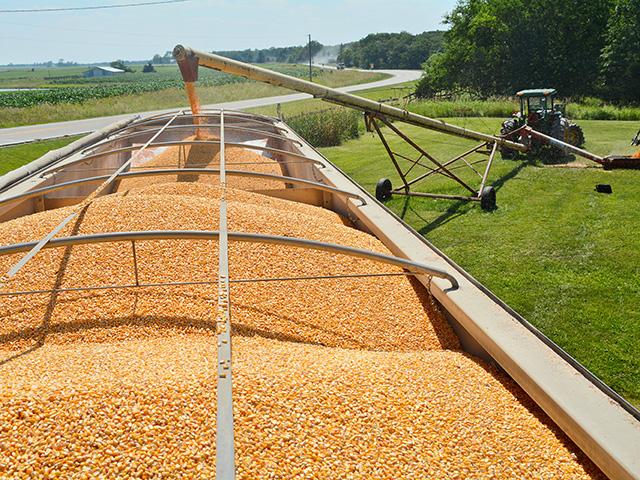Under the Agridome
Into a New World Where Supply is Not Taken for Granted
The last two years have been quite a journey. You all know what I mean, COVID-19 has certainly changed our world and exhausted all of us. In the developing nations where many of my friends live, COVID-19 continues to be a breeding ground for new variants of concern. In Ontario and Quebec, politicians are musing about what is next and in Saskatchewan politicians are saying we're going to go back to normal because omicron has taught us we don't have a lot of choice in the matter. As you all know, I'm a farmer and agricultural economist, not a scientist or a health professional, so we move on hoping for good things.
I don't know if good things are coming because we've got so much to think about in our agricultural world aside from planting crops and feeding livestock. However, I have found the COVID-related nuances that are affecting the global economy incredibly interesting to think about.
I talked to a vendor in the home entertainment business today. He told me he couldn't get certain types of video receivers for 12 months and it was totally related to the problems with getting raw materials to make those receivers.
At the same time, Canada is importing a lot of corn more than usual, to feed livestock in Western Canada. At the same time, we have interruptions in the cattle industry just because of the times we're in. It is such an economic anomaly.
P[L1] D[0x0] M[300x250] OOP[F] ADUNIT[] T[]
I say that because we've always known in our pre-COVID society that if there is a need, it will be filled, and it will be done quickly. Money has that effect. For instance, as farmers we are used to ordering parts for equipment. Often, we can order a part and it will come in the next day, but increasingly that is difficult, especially if you need parts related to your guidance system, which requires chips. At a certain point you would think that this would change, but it's completely obvious even in 2022 it is not changing very quickly and these COVID-related supply constraints continue to challenge everyone.
This is certainly true within the grain market as well. It's easy to judge grain prices based on past realities. For instance, I do my fair share of that when I write commodity commentary. History is a great teacher and when it comes to the fundamentals of corn, soybeans and wheat it is often a good barometer of where things might go. However, it's increasingly obvious to me during COVID that is very different. Much of the price discovery for grain during the last six or seven months has been more heavily related to basis values and where you sit in this world. Increasingly, possession of grain has made a bigger difference especially at a time of pandemic when moving it is not guaranteed.
This has put the focus to some extent on the just in time delivery system that we all have become accustomed to. It is so nice when everything works, but clearly during this pandemic time everything does not work like it should and it is very unlikely to return to the normal we once knew. There are real issues here regarding our supply of almost everything. Simply putting something on a truck or a ship seamlessly and hoping for as smooth journey to the end user is becoming increasingly more difficult.
I could have never envisioned any of this based on my background as an agricultural economist because I had never experienced a pandemic before. For instance, talk to me about Canadian imports of U.S. corn and I'll tell you about the back and forth across the Michigan and Ontario border through the years. I could never imagine the amounts of corn shipped into Western Canada this year skewing the conventional wisdom about Canadian corn imports. Sure, much of that had to do with the drought last year in Western Canada, but the story doesn't end there. The Canadian cattle industry which is buying the corn is dealing with COVID constraints to get their end product out the door and that is becoming increasingly difficult.
It's not a matter of eating more beef. It's a matter of changing the supply chain not only in beef but everything else to adjust to a post COVID world that might still be years away. That likely will involve some new technology, which might mean autonomous transportation equipment in some cases. However, the answers to that problematic paradigm are evolving. I think key might be for everyone to realize that the "just in time" delivery system isn't going to come back. We should expect something much newer which will work in a world where supply is not taken for granted as much as it was in the past.
As you all know, soybean and canola prices are very high and grain prices in general are buoyant. There are fundamental reasons for that, dryness in Brazil being one of them. However, if you dig deeper, it is more than that. The COVID-19 pandemic has changed tastes and preferences and exposed the economic infrastructure to transport agricultural commodities as lacking. We got here with our eyes all wide open. Like, nobody could see this coming. Expect more of it as we roll through 2022 and 2023.
**
The views expressed are those of the individual author and not necessarily those of DTN, its management or employees.
Philip Shaw can be reached at philip@philipshaw.ca
Follow him on Twitter @Agridome
(c) Copyright 2022 DTN, LLC. All rights reserved.




